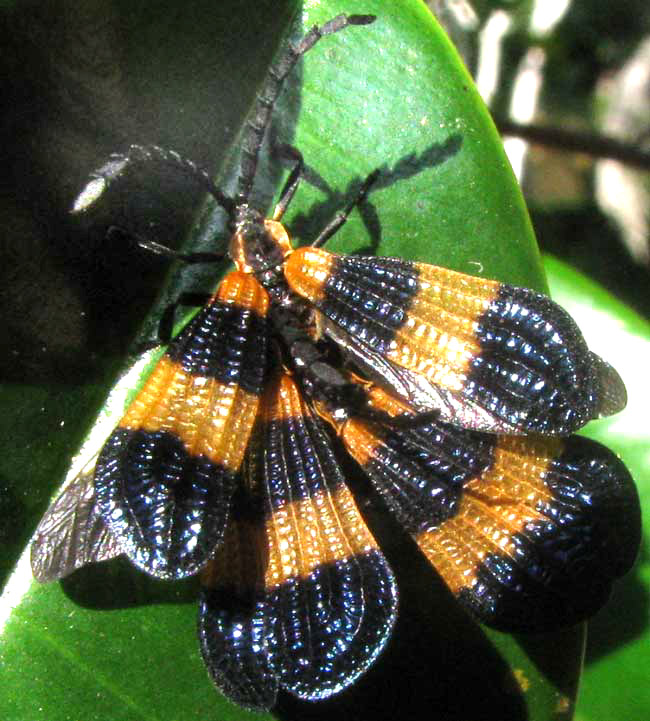Excerpts from Jim Conrad's
Naturalist Newsletter

from the January 15, 2012 Newsletter issued from Hacienda Chichen Resort beside Chichén Itzá Ruins; limestone bedrock; elevation ~39m (~128ft), N20.675°, W88.569°; central Yucatán state, MÉXICO
BEETLE PUZZLE
Can you figure out what's going on with the beetle above?
It's a beetle because it has four wings and the front pair, the "elytra," are thick and hard, cover the body, and, in this case, are colorful. Visible just beneath the top pair of wings is a second pair, but these wings are very thin and transparent. But, what's going on lower down, behind those four wings?
The deal is that the top four wings belong to a female beetle while the bottom ones are borne by two males with mating on their minds. Only one male is having success. The one at the bottom right tries and tries but simply can't find his target.
Volunteer identifier Bea in Ontario immediately recognized this as some kind of Net-winged Beetle because up there she's seen the same thing or a very similar species -- something in the genus Calopteron. However, she reads that 149 species of Calopteron are recognized for the New World, so it's a good guess that we have a different species here. Beetles in the family to which Calopterons belong are distinguished by their elytra bearing elevated lengthwise ridges and cross ridges.
Calopteron larvae are reported to live in rotten logs, under loose bark and, less commonly, in soil or leaf litter. They're said to feed on slime molds, fungi and fermenting plant juices. As often is the case with brightly colored insects that seem like they'd make a good bird-snack, Net-wing Beetle adults produce chemicals that probably make them smell and taste bad. The bright colors warn predators of their undesirability.